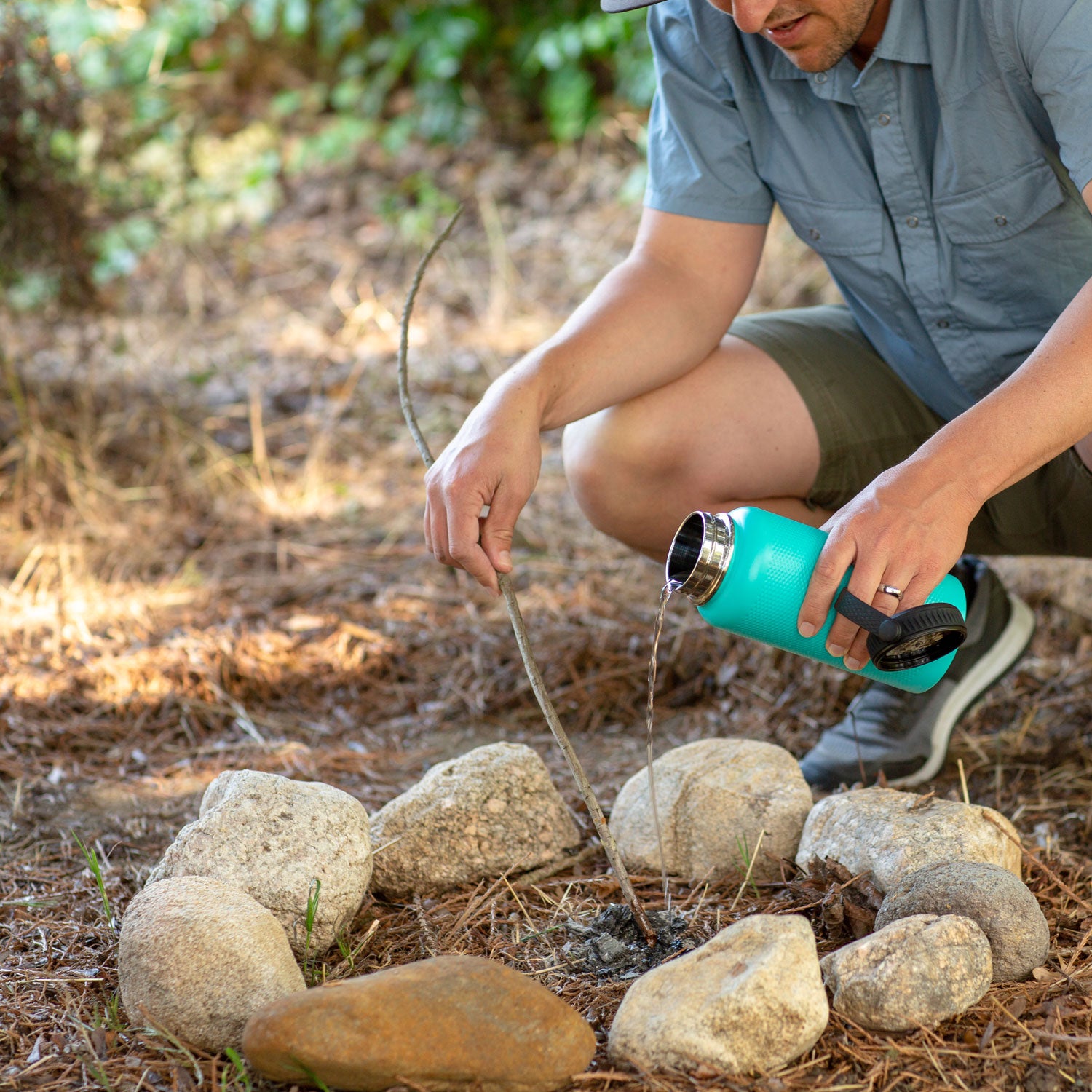Given the miserable winter the West had this year, camping this summer feels like pitching a tent in the middle of a tinderbox. You need to be extra safe when cooking or working with flames in the backcountry. And in a lot of places, you probably shouldn’t (or can’t) have a fire to begin with.
For tips on how to avoid starting a forest fire, plus the gear you’ll need, I interviewed Marco Johnson, who has worked and taught wilderness courses at in Wyoming for more than 30 years. Here, his pointers for making doubly sure you leave the wild as you found it: unburned.
#1. Do Your Reading
Before heading into the backcountry, or even pulling up to an established car camping site, make sure you read the rules surrounding what kind of fires you can or can’t make. “Check in with land management agencies—like the Forest Service and the BLM—on fire danger, regardless of whether it is low, moderate, high, or extreme,” Johnson says. “One, we don’t want to harm public lands, and two, we don’t want to put wildland firefighters at risk.” from the Forest Service has a handy breakdown of what is and isn’t allowed under the two restriction stages. For example, under Stage 1, you can have a campfire, but only on developed recreation sites. Under Stage 2, liquid petroleum stoves are allowed only in areas that are away from stuff that could potentially catch fire. Campfires, charcoal, coal, and woodstoves are off-limits. Any fire danger above Stage 2 results in a forest closure.
#2. Know Your Stove
“Take it out into your driveway and practice with it a bunch,” Johnson says. The ($100), which NOLS uses for its courses, is a reliable little unit. But priming one can also create a veritable blowtorch if done improperly. “You might find that you only need X amount of fuel in the fuel cup to really prime a stove without flooding it,” Johnson says. While canister stoves like the ($100) have a more contained fire and less of a learning curve, fire is still possible if you drop one on its side or if the heat is reflected down into dry grass. A fire-prone environment is not the place to futz with your stove; nonflammable pavement is.
#3. Get (or Make) a Ground Cover for Your Stove
Speaking of reflecting hear, the ($15), designed for the company’s WhisperLite stoves, attaches around the base and protects potentially flammable material from both flame and heat. If you don’t want to spring for one or it isn’t compatible with your stove, Johnson has a few hacks you can use to create one yourself. “Sometimes you can talk to the Forest Service or BLM, and they will have old fire shelters that they issue to wildland fire fighters that are past their expiry date,” Johnson says. “You can cut those up into little squares to rest your stove on, and anything that falls off just falls on that.” Lightweight sheet tin from a hardware store also works. Cutting a one-foot square and dulling the edges will create a similar fire guard.
#4. Bake with a “Twiggy” Fire
While a majority of the cooking Johnson does in the backcountry is over a stove, he has a special place in his heart for cooking over a more natural flame. “We teach how to cook on fires at NOLS because it’s a dying art and it’s something we love to do as humans,” Johnson says. One of the ways he uses flames to cook is to make a very small fire on top of a flipped-over frying pan lid, like a ($61), while running the stove below to create an oven for bread and pizzas. Johnson uses kindling no bigger than the diameter of a finger and allows it to burn out to white ash. The small size of the fire keeps it manageable and protects the ground and dry grass from the flames while still filling that primal love of cooking with wood. But again, don’t try this under Stage 2 fire restrictions.
#5. Keep Fire Rings Clear
If regulations permit an open fire and there is an established fire ring, you should still make sure there isn’t flammable material around it. (Think pine cones, pine needles, dead leaves, and dried grass.) Johnson suggests getting all your materials together to start with so you don’t run for other sticks or branches to feed a dying fire and leave it unattended. Johnson uses ($7) for simplicity.
#6. Don’t Light a Fire at All
If fire danger is too high for open flame, Johnson likes to swap a fire for another, much safer light source. “A solar lantern or ($55) can create that social circle,” he says.
#7. Have Plenty of Water on Hand
“Whether it’s a small fire or one that I’ve put in an existing fire pit,” Johnson says, “I’m going to use copious amounts of water and stir it around, and I’ll make sure that when I leave, I put my hands into those old coals and not feel any heat.” On top of the water Johnson has for drinking, cooking, and cleaning, he usually has an MSR four- to six-liter ($45) handy to douse flames or embers.
#8. Mind Your Car
Not all fire risks are so obvious. “Tall grass and a car muffler is not a good mix during fire season,” Johnson says. “Be aware that if you just drove three hours to get to your site, your muffler is pretty hot.” The fix here is simple: Avoid parking or driving through areas with grass that would touch your muffler.


